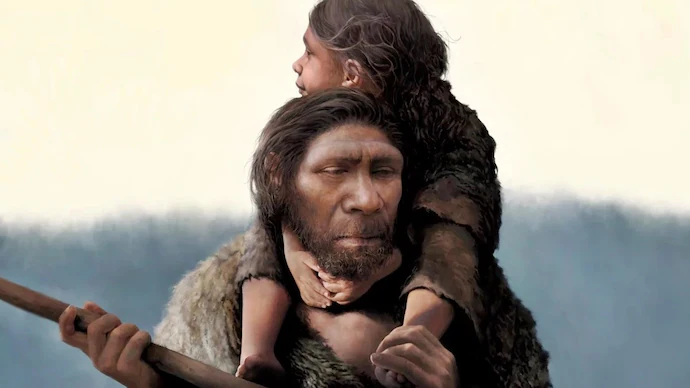The research indicates that these early humans lived in small, mobile groups, thriving in the diverse ecological landscape of the hub.

In Short
- The study suggests that the people of this hub had dark skin and hair
- This discovery provides a comprehensive view of the early phases of non-African human colonisation
- The findings are published in Nature Communications
Scientists have unveiled a crucial chapter in the story of human migration. More than 60,000 years after Homo sapiens embarked on their monumental journey out of Africa, researchers have pinpointed a “hub” on the Persian Plateau where our ancestors congregated before dispersing across Eurasia.
This region, spanning parts of modern-day Iran, southeast Iraq, and northeast Saudi Arabia, served as a vital staging ground for early humans. According to molecular anthropologist Luca Pagani of the University of Padova, Italy, and senior author of the study, this discovery provides a comprehensive view of the early phases of non-African human colonisation.
______________________________________________________________________________
Read Also : A science teacher explains: How emus and ostriches lost the ability to fly
______________________________________________________________________________
The findings, published in Nature Communications, are based on an innovative combination of ancient DNA analysis and palaeoecological models, revealing that the Persian Plateau offered an ideal habitat for these hunter-gatherer bands.
Michael Petraglia, an anthropologist and co-author of the study, emphasised the significance of understanding our evolutionary history and global dispersal.
The research indicates that these early humans lived in small, mobile groups, thriving in the diverse ecological landscape of the hub.
From forests to savannahs, the area’s fluctuating climate presented abundant resources, including wild gazelle, sheep, and goat. The inhabitants practiced a seasonal lifestyle, adapting to the changing environment by moving between lowlands and mountainous regions.
Interestingly, the study suggests that the people of this hub had dark skin and hair, drawing parallels with contemporary East African populations such as the Gumuz or Anuak. The emergence of cave art coinciding with their departure from the hub hints at the cultural developments that may have originated during this period.
______________________________________________________________________________
Read Also : The Earth is Home to Over 50 Billion Birds, Six Times More Than Humans,…
______________________________________________________________________________
The eventual spread of these populations laid the groundwork for the genetic divergence seen today between East Asians and Europeans.
By analyzing the oldest genomes, dating back 45,000 to 35,000 years ago, the researchers were able to trace back to this pivotal hub despite the extensive genetic mixing that has occurred since.
This research not only sheds light on the routes taken by our ancestors but also highlights the interactions with Neanderthals, suggesting that the Persian Plateau may have been a key site for such encounters.
NOTE – This article was originally published in indiatoday and can be viewed here







